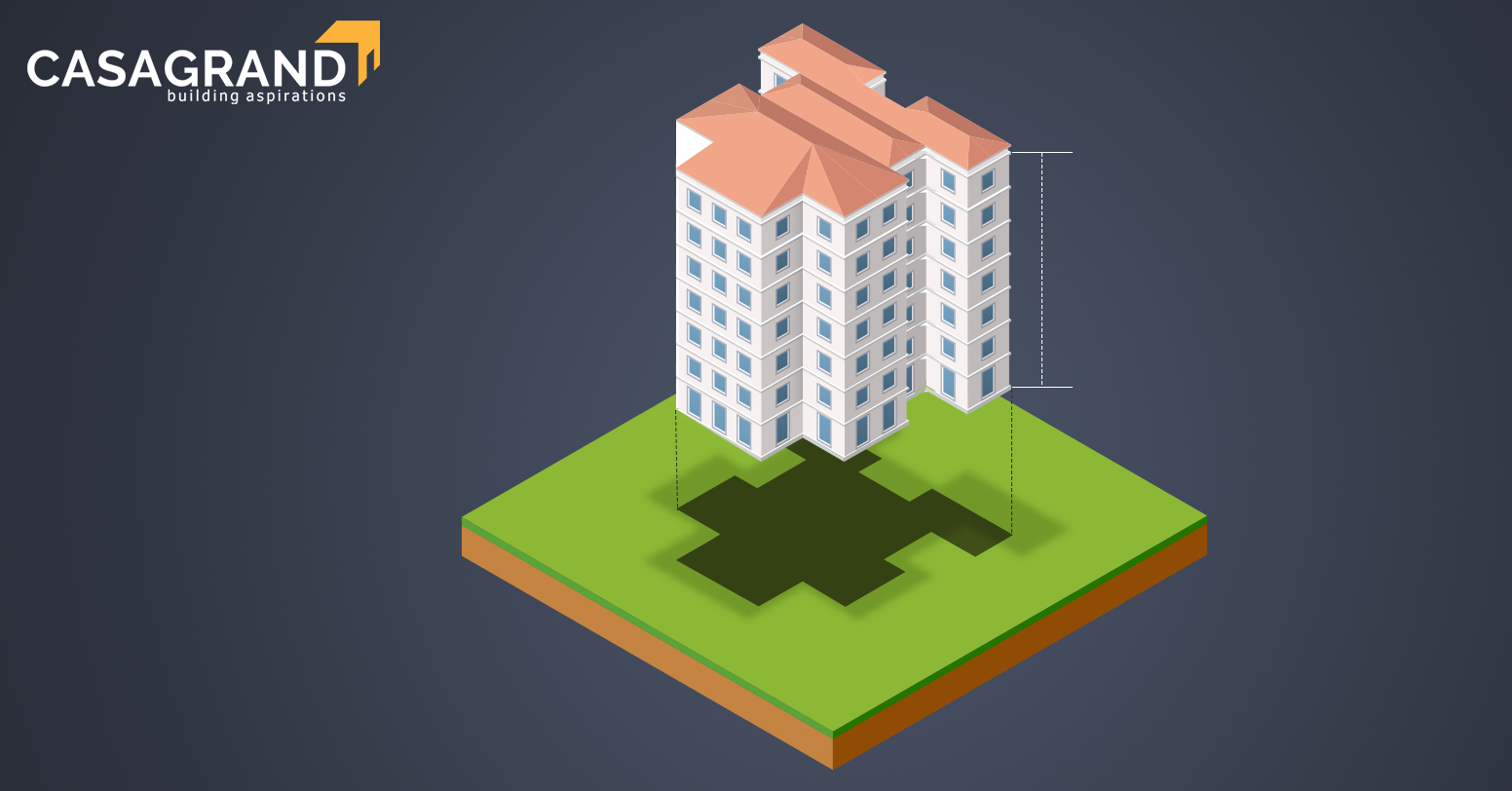The term Floor Area Ratio (FAR) is one of the most commonly used ones in the real estate industry. But what does it mean? FAR is the ratio of a house’s total constructed floor area to the area of the land on which it was built. The floor area ratio, also known as the floor space index (FSI), has to adhere to the development control regulations of the municipal corporation. So, builders and developers must follow the requirements of the community they cater to.
The FAR or FSI is a measurement of how much space on a block of land can be built on. The floor area ratio is 2 if a 2,000 square foot (sq. ft) structure is built on a 1,000 square foot land. Similarly, the floor size of a 3,000 sq. ft building on a 1,000 sq. ft plot equals 3, and so on.
Calculation – Floor Area Ratio and Floor Space Index
While they are used interchangeably, the difference between the floor area ratio and the floor space index is how they are expressed. The floor square index is usually stated as a percentage, whereas the floor area ratio is expressed as a ratio. Therefore, a floor area ratio of 1.4 would be expressed as 140 per cent in terms of the floor space index.
The floor area ratio is determined by dividing the total covered area (of all levels and floors) by the plot area. For example, if the permitted FSI in a zone as per developmental control norms (DCR) is 1.5, and the builder has 1,000 sq m plot for a structure. On this plot, he is then permitted to build up to 1,500 sq m. This 1,500 sq m covered area can be 2 floors of 750 sq m or 3 floors of 500 sq m, depending on the type of structure and permissible number of floors. The basic structure, walls, stairwells, and lobby space, if any, would all be included in the completed area.
FAR or FSI vary depending on the location and the municipal corporation, as well as the type of land – industrial, residential, commercial, agricultural or non-agricultural. This is due to the fact that the organic growth pattern, population dynamics, and construction activities differ from place to another.
The Importance of Floor Area Ratio for Homebuyers
Floor area ratio is an important factor to consider when you are house hunting in any town, locality, or region. Whether you are seeking houses for sale in Bangalore or flats for sale in Chennai, FSI/FAR can be a good indicator of the attractiveness of a location and population density. One thing that needs to be noted is that, depending on a number of factors, homeowners looking to sell residences in buildings with a higher floor area ratio may receive lower resale value.
FSI is also critical from an environmental standpoint. Higher floor ratios indicate that there are more floors in a given space, indicating a denser concentration of buildings. There are usually fewer open spaces in areas with a high FAR.
The floor area ratio is determined by municipal corporations, and the maximum floor area ratio is normally not more than 2.5. Inspection by authorities is critical as builders also include shared amenities in building complexes for this calculation. Parks, gardens, swimming pools, and gyms are among the amenities that are shared by all inhabitants of the complex.
The Importance of Floor Space Index for Developers
Higher FSI translates to higher monetary gains for builders, as they are able to develop and sell more
floor area on any prospective plot. A low FAR can be a barrier to construction. On the other hand, a
higher FAR can be beneficial in places where there is a pressing challenge of providing lodging to
everybody and realising the dream of ‘Housing for All’.
In Indian cities, minimal land resources have already been strained by growing urbanisation. More
FAR could assist developers in obtaining additional space and bridging the demand-supply
imbalance. For homeowners looking for a house for sale in Chennai, it is important to note that FSI
was increased to 2 from 1.5 in the city four years ago.
FAR Violation
Violation norms related to floor area ratio is a crime. Violations are usually discovered when a
builder or developer files a completion certificate. So before accepting the handover of their
apartments or residences, homebuyers should inspect the builder’s completion certificate. If a
violation results in action from the authorities, it could cause project delays.
In addition to that, buying property in a project that has broken the city/locality’s FAR restrictions
could have major ramifications on your credit worthiness. For example, if you were to seek a loan
when buying villas in Coimbatore, a previous property that you were involved with which is under
investigation for FAR violation could become a problem.
How Does FAR Impact Pricing?
It is not necessarily true that if a developer builds more due to higher FAR, they will be able to sell
the houses for a lesser price. Many more factors play a role in developing and selling units at the
right pricing. Density norms, for one, also dictate home pricing. In certain areas, despite higher FSI,
height restrictions cannot be violated due to concerns regarding the structure’s and residents’
safety.
Conclusion
FAR or FSI is used to calculate the maximum floor area that is permitted to be constructed on any
given piece of land, and is determined by an area’s developmental control norms as laid down by the
municipal corporations and authorities. Understanding these norms and restrictions while buying a
new home is paramount for taking an informed decision.

















